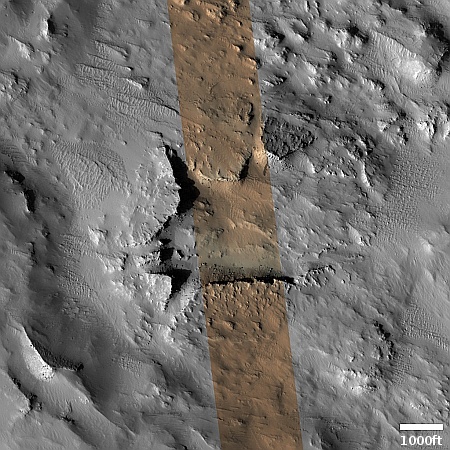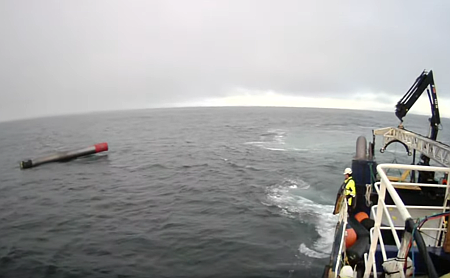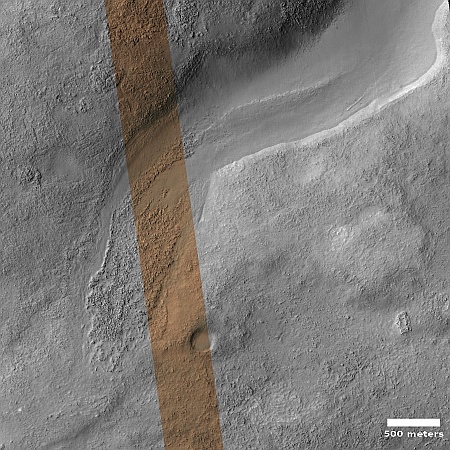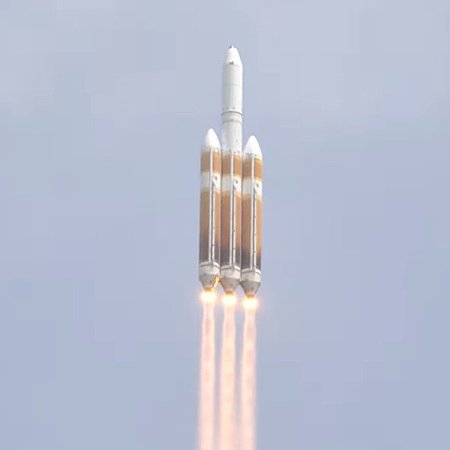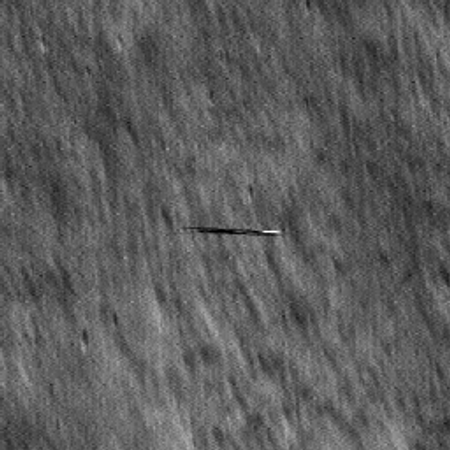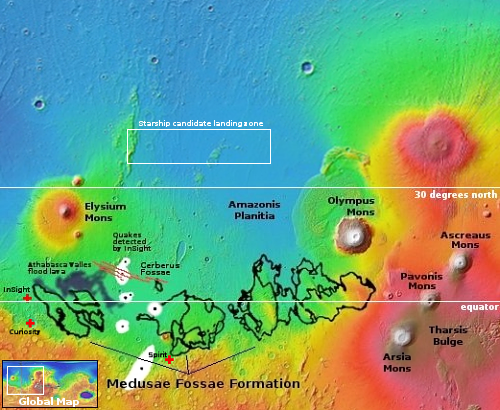A Martian river of sand
Cool image time! The panorama above, cropped, reduced, enhanced, and flipped to post here, was taken on April 14, 2024 by the right navigation camera on the Mars rover Curiosity, created from a total of 31 images.
The full mosaic covers a full 360 degree view from where Curiosity presently sits, inside the slot canyon Gediz Vallis. The part shown above only covers a little more than half, looking west at the butte which forms the western wall of the slot canyon, as shown by the yellow lines and the arrow in the overview map to the right. The blue dot marks Curiosity’s present position, while the red dotted line its planned route.
What makes this part of the mosaic especially distinct is the narrow river of sand that flows downhill from the right to the left. While everywhere else the ground is heavily covered with rocks, along this strip the surface is smooth sand, with many frozen dunes resembling waves or ripples as the flows downhill slowly.
The river is formed against a low cliff wall, which is why the sand gathered along this strip. At the same time, the downhill grade to the left (north) is allowing the sand to carve a distinct path, at the base of that cliff.
I’ve said it before and I’ll say it again: Mars is alien, Mars is unique, but above all, Mars is wonderful.
Cool image time! The panorama above, cropped, reduced, enhanced, and flipped to post here, was taken on April 14, 2024 by the right navigation camera on the Mars rover Curiosity, created from a total of 31 images.
The full mosaic covers a full 360 degree view from where Curiosity presently sits, inside the slot canyon Gediz Vallis. The part shown above only covers a little more than half, looking west at the butte which forms the western wall of the slot canyon, as shown by the yellow lines and the arrow in the overview map to the right. The blue dot marks Curiosity’s present position, while the red dotted line its planned route.
What makes this part of the mosaic especially distinct is the narrow river of sand that flows downhill from the right to the left. While everywhere else the ground is heavily covered with rocks, along this strip the surface is smooth sand, with many frozen dunes resembling waves or ripples as the flows downhill slowly.
The river is formed against a low cliff wall, which is why the sand gathered along this strip. At the same time, the downhill grade to the left (north) is allowing the sand to carve a distinct path, at the base of that cliff.
I’ve said it before and I’ll say it again: Mars is alien, Mars is unique, but above all, Mars is wonderful.




